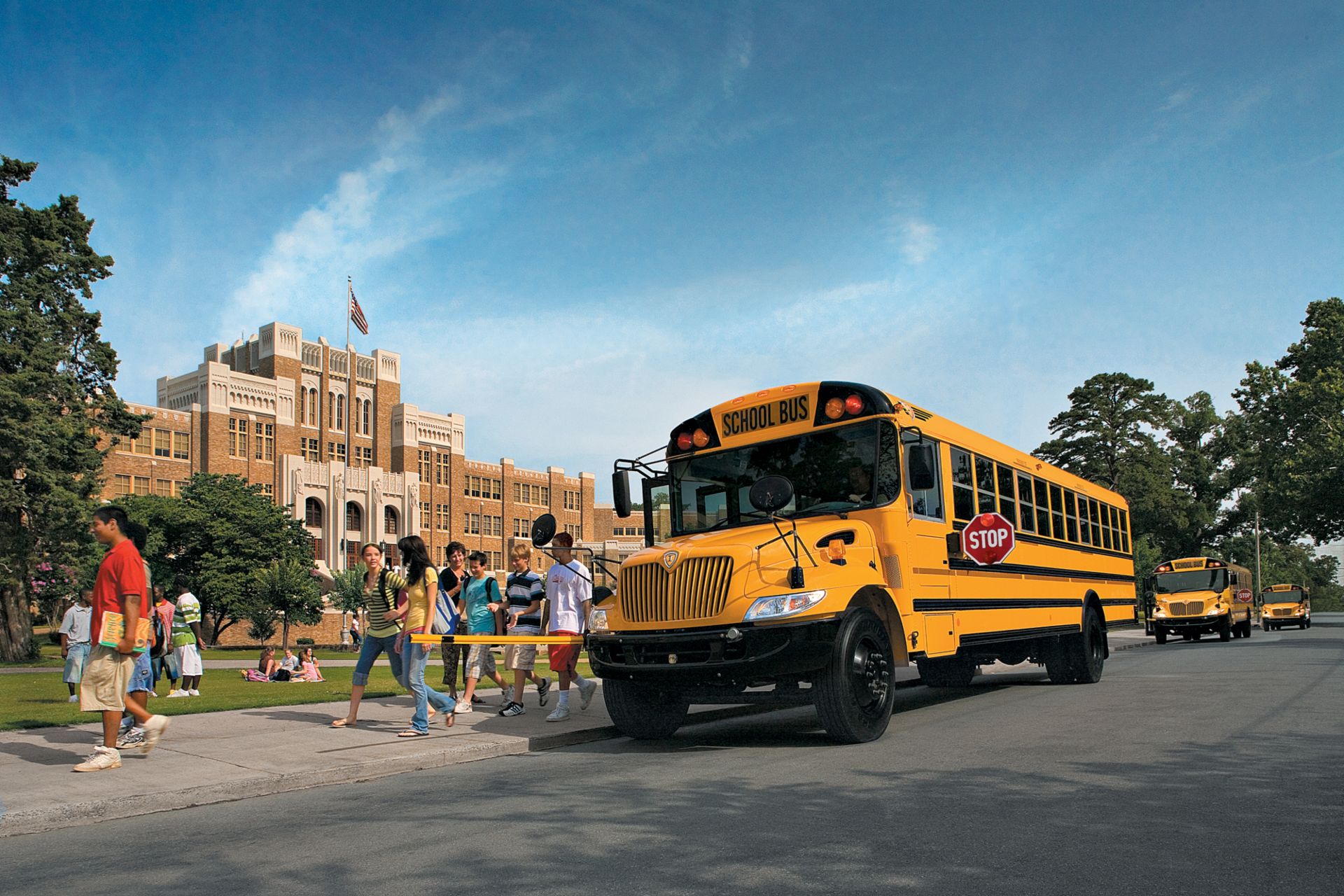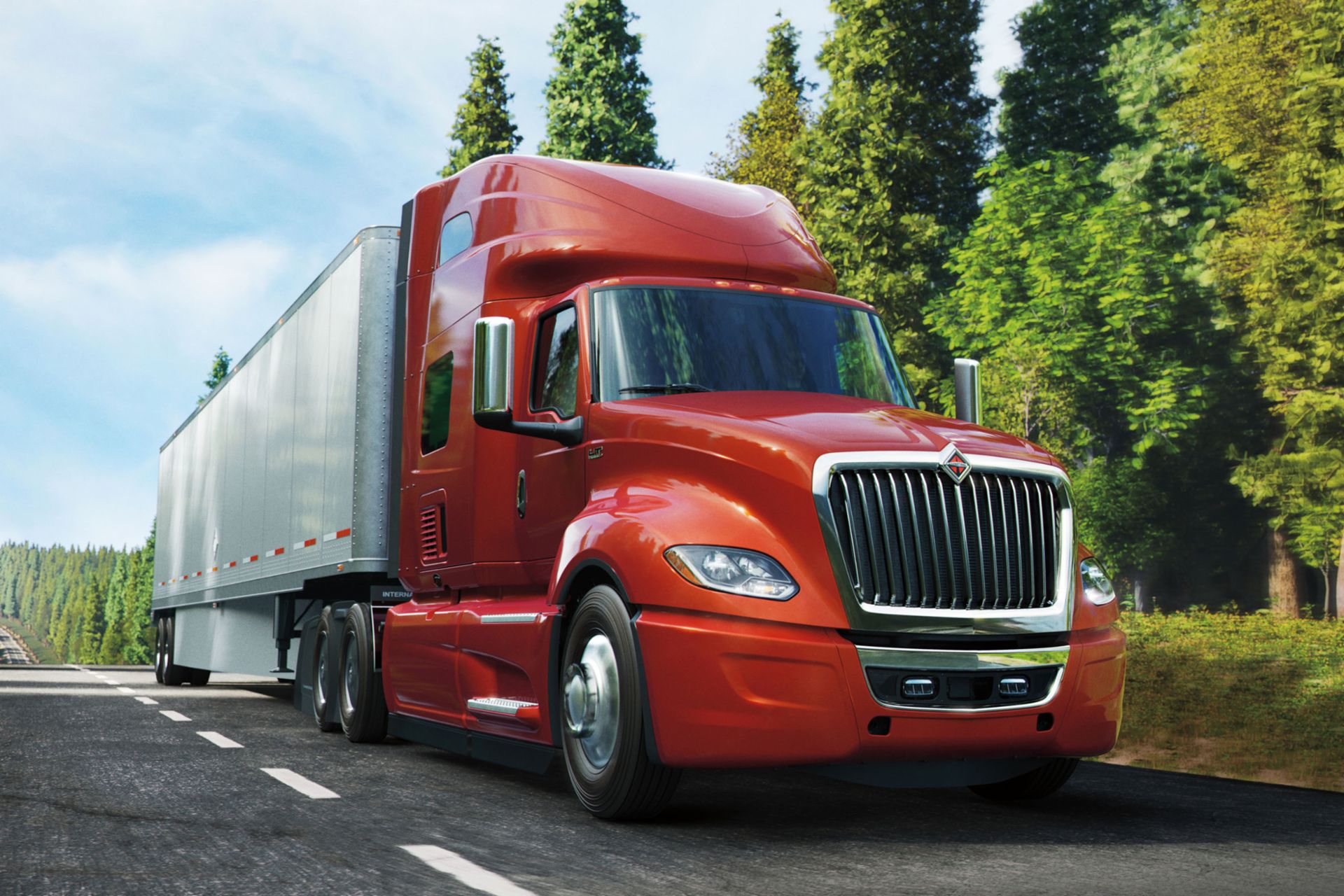The air over Highway 163 shimmers. Prickly tumbleweeds blow along the road. In the distance, the red rocks of Monument Valley form a majestic guard of honor, the stretch of asphalt seemingly disappearing into the horizon. A distant rumbling grows louder — and then WOOOSH! A truck drives past, heading for the Southwest. Welcome to America! And welcome to the world of Navistar. The International-branded trucks are some of the strongest, most reliable and innovative vehicles to transport goods on the highways of North America, ensuring the security of supply across its vast expanse. So where to look for Navistar roots? We need to go back almost 200 years to discover them. To a farm nestled among the rolling green hills of Rockbridge County, Virginia.
Six weeks of hard work in the blacksmith’s shop on his parents’ Walnut Grove farm in Virginia — that’s all it took 22-year-old Cyrus McCormick to invent the reaper. His eureka moment? He built the reel that pushed the grain stalks in place so the reciprocal cutting blades could cut them in one sweep. Cyrus must have been pretty proud of himself. Before that, his father Robert had spent 15 years trying and failing to build a reaper pulled by horses. Cyrus successfully demonstrated his Virginia Reaper in 1831, that very same year. The machine replaced six two dozen farm hands — and jump-started the process of agricultural mechanization. It also laid the foundation for Navistar’s history. But before the first trucks could roll off the production line, the McCormick family still had some fields to plow.
In 1851, the French Academy of Sciences welcomed Cyrus McCormick as a member, praising him for having done “more for the cause of agriculture than any other living man.” However, the Virginia Reaper owes its success to custom marketing as well as to its ingenious design. McCormick knew exactly what farmers needed, having been one himself. Showing strong business acumen, he introduced a product warranty for the first time in 1842, was the first to offer a deferred payment plan in 1871, and organized his sales through a network of meticulously trained representatives across the country, which evolved into the world’s first franchise business model in the early 1880s.
When McCormick died in 1884, his reapers were already being used in 82 countries around the world. His oldest son Cyrus Jr. took over the business and in 1902 merged the McCormick Harvesting Machine Company with several other manufacturers including the Deering Harvesting Company (previously its biggest competitor). From this, International Harvester emerged. By 1910, the newly formed enterprise had become the fourth largest in the US, with production in Sweden, Germany, Russia and Australia. And it continued to set milestones in agricultural technology - for example, the Farmall tractor launched in 1924, which was initially designed to fit perfectly between rows of planted corn, wheat or soy beans.
Subsequent technological development at International Harvester went beyond agricultural machinery. Talented engineer Ed Johnston designed the company’s first gasoline engine (1904) and put wheels under both its first automobile (1907) and its first truck (1909). The pickup truck named “Auto-Wagon” had a load capacity of almost 400 kilograms and was the starting point for the International Truck brand, under which Navistar sells its flagship vehicles today.

International Harvester set a milestone in 1915 with the company’s first school bus. Today, the yellow buses remain at the heart of the US school system as its logistical footing. Along with burgers, baseball and the Grand Canyon, they are what you think of when you think of America. Engineers at International Harvester revolutionized the construction of truck engines when they adopted the use of wet cylinder liners, which made repairing engines a lot simpler. They were first used in the Model H truck and the Model 8-16 tractor. And vehicles from the robust 54, 74, 94, and 104 truck models of the 1920s played a role in the construction of portions of the New York subway network. Later on, International Harvester was chosen as the exclusive supplier of trucks for the construction of the Hoover Dam, which began in 1931.
International Harvester quickly worked its way up to the top of the truck business. Starting in the 1960s, the company became the largest US manufacturer of trucks with short, cab-over-engine style cabs like those used in Europe today. By mid-1970s, International Harvester had produced more than five million trucks and five million tractors. The company employed 125,000 people and operated 47 production sites around the world.
After this, however, the boom ended. International Harvester slid into a crisis and restructuring became unavoidable. In 1982, the company divested its construction machinery business. Two years later, it sold its agricultural arm and its International Harvester name. Finally, more than one and a half centuries after it was founded, the company turned over a new leaf and rebranded itself as Navistar in 1986. From then on, its core business consisted of the development and production of trucks, buses and engines. By focusing on these areas, which remain significant to this day, the company was able to regain its success. Navistar’s business grew as a result of targeted acquisitions, for example buying bus manufacturer American Transportation Corporation, better known as AmTran. And also thanks to innovative trucks, like the ProStar series, which set new standards in terms of both aerodynamics and fuel efficiency when it premiered in 2007. Now that Navistar has joined the TRATON GROUP, with which it has had a strategic partnership since 2016, the company is embarking on a new, fruitful chapter in its 190-year-long history.
